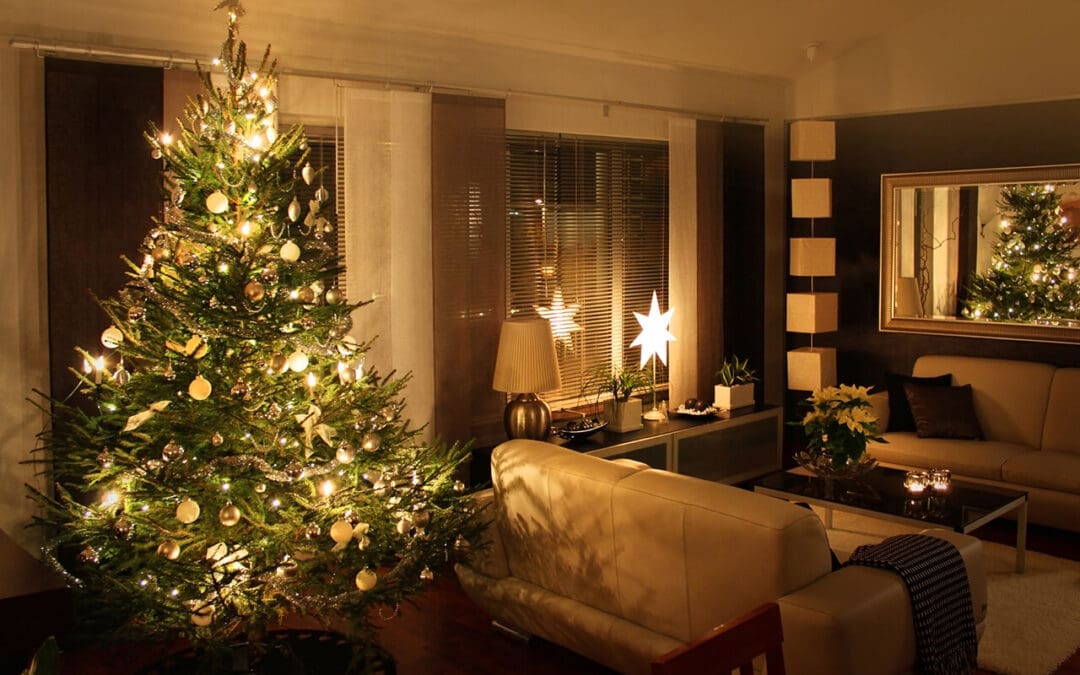The holiday season, from Thanksgiving through Christmas, is a wonderful time filled with family, food, and festive cheer. However, this period also brings unique risks, including increased fire hazards in the kitchen and living room, as well as security concerns while traveling or entertaining. Comprehensive holiday safety requires planning and vigilance. By taking proactive steps to address the common pitfalls of the season, you will protect your loved ones and your home, guaranteeing your celebrations are joyous and worry-free.
Fire Prevention Holiday Safety Tips
The Thanksgiving kitchen is often the busiest and most hazardous room in the house. Cooking fires peak on Thanksgiving Day, making fire prevention the cornerstone of your holiday safety plan. Never leave food cooking unattended on the stovetop. Frying, in particular, requires constant supervision. If a grease fire starts, never attempt to put it out with water; water will spread the fire. Instead, slide a lid over the pan to smother the flames, or use a certified kitchen fire extinguisher. Before the holiday rush, test your smoke alarms to ensure they are functioning properly. It’s also smart to keep your oven and stove clean. Built-up grease and food scraps could easily ignite when subjected to high heat. Maintaining a clean and well-maintained cooking area is the absolute first step toward guaranteeing Thanksgiving safety.
Ensuring Holiday Safety with Lights and Trees
Christmas decorations are beautiful, but they introduce significant fire and electrical hazards. Knowing how to manage these risks is central to long-term holiday safety. When purchasing lights, always look for the label of an independent testing laboratory. Never use outdoor lights indoors, as they are not manufactured to the same safety standards. Before hanging lights, inspect every strand for frayed wires, cracked sockets, or loose connections. Damaged strands should be discarded immediately. Do not overload electrical outlets; follow the manufacturer’s guidelines for connecting multiple strands, usually no more than three standard sets.
For the Christmas tree, whether real or artificial, its placement is crucial for safety. Position the tree far away from heat sources like fireplaces, radiators, or vents. If you choose a live tree, keep the stand filled with water daily. A dry tree could be engulfed in flames in seconds, making proper hydration essential for minimizing this significant fire risk during the Christmas season.
Home Security During Holiday Travel
While festive events keep people busy, they also offer opportunities for thieves, making home security a necessary part of overall holiday safety. If you plan to travel, refrain from advertising your absence on social media. Avoid posting pictures or updating your status until you have returned home. An empty house is an easy target. Before leaving, implement smart home technology by using programmable timers or smart plugs to manage interior and exterior lighting. Set lights to turn on and off at staggered, realistic times to simulate occupancy.
Another key component while away is securing deliveries. With the rise of “porch piracy,” consider arranging for a trusted neighbor to collect your mail and packages daily, or utilize secure delivery lockboxes. Check all doors and windows are locked, and if you have a security system, verify it is armed and functioning correctly before departure.
Guest Preparedness: Entertain with Peace of Mind
Hosting friends and family adds to the holiday joy, but it also increases the need for preparedness, particularly in terms of injury prevention. Make sure that all walkways, both inside and outside, are clear and well-lit. Clear clutter from high-traffic areas and ensure rugs are securely in place to prevent tripping, especially for elderly guests or small children. If you have a fireplace in use, always use a sturdy screen to contain sparks and rolling logs. Provide constant supervision for children and pets when the fire is lit. Furthermore, always keep lighters, matches, and potentially hazardous seasonal items, such as liquid potpourri or decorative plants (like mistletoe and holly berries), out of the reach of children and pets.
Frequently Asked Questions (FAQs)
How long should I leave my holiday lights on each day?
To maximize holiday safety and minimize fire risk, turn off all decorative lights, both inside and outside, before going to bed or leaving your home. You could use an inexpensive timer to automate this process.
Is it safe to put a live Christmas tree near a heat vent?
Absolutely not. Placing a live Christmas tree near any heat source, including a vent, fireplace, or radiator, will cause it to dry out rapidly, significantly increasing its flammability.
What kind of fire extinguisher is best for kitchen holiday safety?
A Class B or Class K fire extinguisher is recommended for kitchen use, as they are specifically designed to suppress fires involving grease and oil. An ABC-rated multi-purpose extinguisher is also acceptable and should be easily accessible.
What is the best temperature for my water heater to prevent scalding when I have guests?
The Consumer Product Safety Commission recommends setting your water heater temperature no higher than 120 degrees.
KeysInspector provides home inspections to customers in the southern Florida area. Contact us to request our services.

